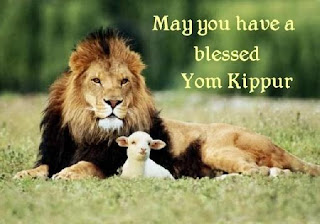Look how Israel treats its Arab minority
(Part 2 - The power of healing)
Original post by Michael Ordman
(some highlights)
Let’s begin in hospital. Israeli Arabs comprise 20% of the population of the Jewish State, therefore 20% of all hospital treatment benefits Israeli Arabs directly. This ranges from standard procedures through to life-saving operations and everything in between - there is no discrimination whatsoever.
In August last year, a Bedouin Arab couple's newborn son was saved by sophisticated treatment, which included days of being connected to a $200,000 heart-lung machine at Sheba Medical Centre’s children’s hospital. In December, Rehovot surgeons saved the life of an Arab construction worker who was impaled for 4 hours on a metal rod.
When any donor organ becomes available, the Israel Transplant computer checks all waiting recipients for suitability. So when Gamal Haja from Nazareth died from a stroke, his sister was amazed and consoled when she was notified that she would receive one of his kidneys. And the tragic death in a car crash of an East Jerusalem Arab boy was somewhat alleviated when his parents agreed to donate his organs, thus saving 3 people including an 8 year old Jewish girl and a 7 year old Arab boy. And just this month, Nabil Hourani’s lungs breathed new life into an Arab and a Jew following his death from a cerebral hemorrhage. Hourani's brother said. ‘My brother now lives on, in both Arabs and Jews, and this is very important to me’.
Israeli hospitals are centres for programs that provide benefit to both Arabs and Jews. Hospitals provide National Service opportunities to Arabs who don’t serve in the IDF, such as Nizar Elkoury and Lubna Kadry – two Arabs who happily perform their duties at the Rambam hospital in Haifa. Hadassah Hospital’s Dr Simcha Chesner has enlisted the Israeli Ministry of Education to use his Idud program to help Arab and Jewish children with ADHD achieve their full potential.
Israel has also some unique facilities for Arabs with specific medical conditions. The first (and so far only) registry for potential unrelated Arab donors of bone marrow or stem cells – which have the ability to cure cancers and other serious disorders – is at Hadassah University Medical Centre in Jerusalem’s Ein Kerem. Israel is also the only country in the world where genetic testing is directly funded by the government. These tests greatly reduce child mortality in the Arab Bedouin population. So it is not surprising that infant mortality of Israeli Arabs has been reduced dramatically and Arabs here live noticeably longer on average than Americans. The average lifespan of Arabs has increased by a massive seven years since 1980.
Israeli funded tests for genetic disorders benefits Bedouin Arabs
The organisation Dental Volunteers for Israel runs a paediatric dental clinic in Jerusalem. Its multi-ethnic treatment policy is summed up by one of their supporters, the artist Lynne Stein - ‘Everybody smiles in the same language.’ To emphasise Israel’s inclusiveness, please watch this video of disabled Arabs & Jews working together. A unique (and profitable) Israeli call centre employs 150 Jewish and 30 Arab physically and mentally disabled adults. ‘Call Yachol’ translates as ‘everyone is able’.
I want to end by singling out Arab Israelis who are shining examples of Israel’s all-embracing society. In May, five Arab girl students from a school in the Galilee, who developed a groundbreaking device to ease side effects of cancer patients, represented Israel in an international competition in Netherlands. Next, Dr Rania Elkhatib is the first Israeli Arab woman to become a plastic surgeon. In fact she says, in this video clip, that she is the first Arab woman to become a plastic surgeon anywhere!
I will leave the final words to Dr. Hossam Haick from the Israel Technion who has pioneered early cancer detection using breath tests. ‘I was born here. I am tied to Israel. I also want to prove to others from the Arab community that nothing is impossible. You hear quite a few prejudices from Arab-Israelis; that Arabs cannot get ahead in Israeli academia. I wanted to prove that this is not true; to prove that if you are talented enough, you get to wherever you want.’ - Please also watch him on this video clip.
Michael Ordman writes a weekly newsletter containing Good News stories about Israel.
www.verygoodnewsisrael.blogspot.com


